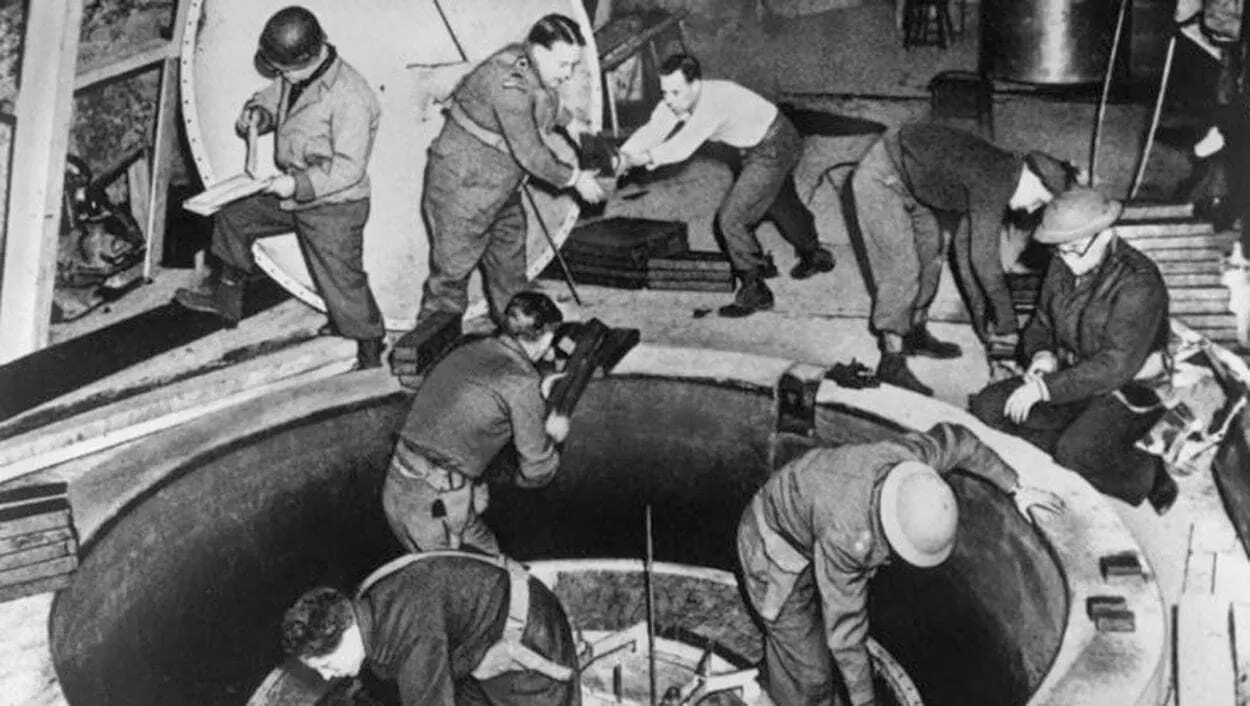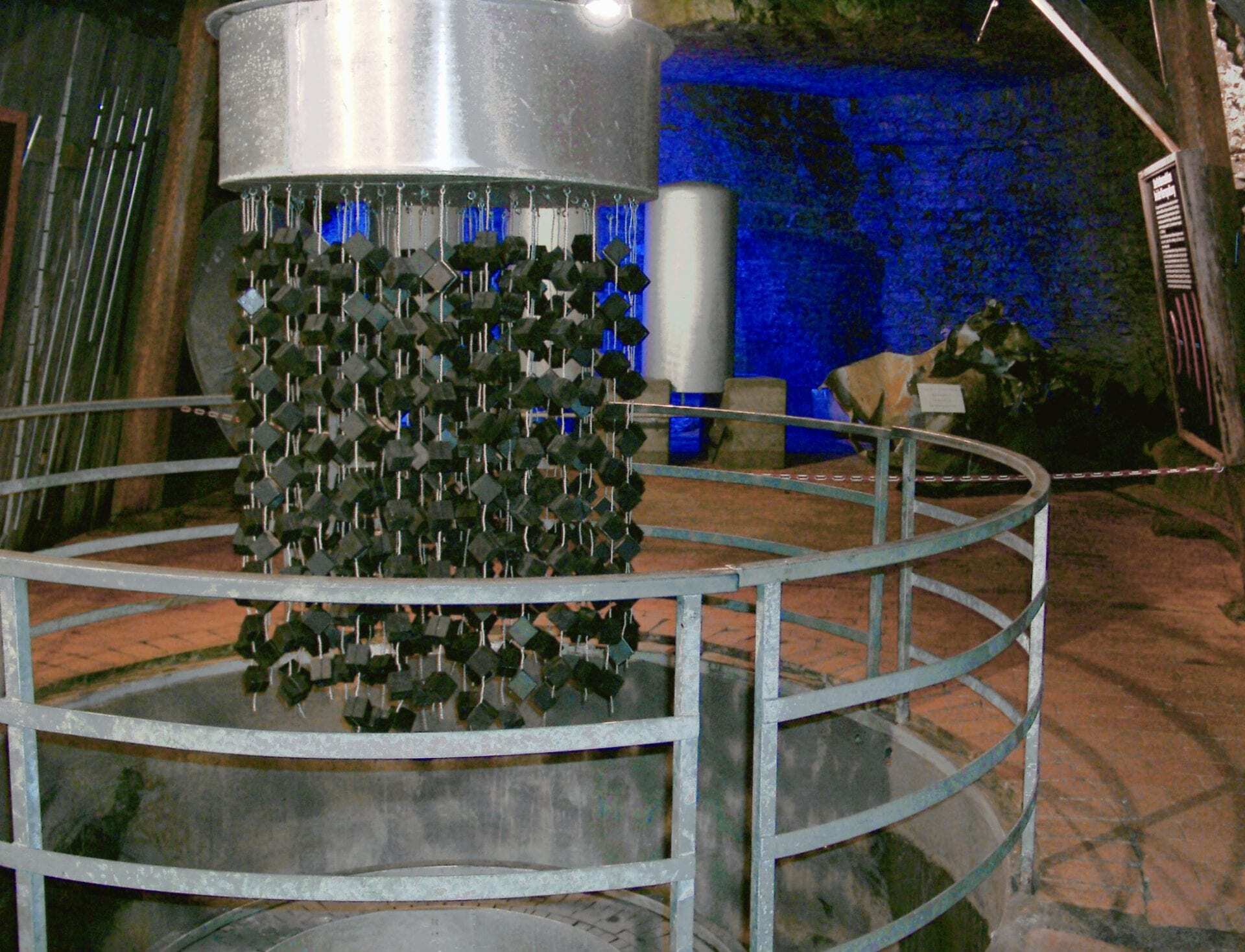Uranprojekt, also known informally as the Uranverein (meaning Uranium Club) was a secret German project to research and develop atomic weapons and energy during the Second World War.
Prior to the outbreak of hostilities, Germany was at the forefront of nuclear research, with the discovery of the first nuclear fission of heavy elements by Otto Hahn (referred to as the father of nuclear chemistry), and his assistant Fritz Strassmann from the Kaiser Wilhelm Institute in 1938.
This was shortly followed by Lise Meitner, an Austrian-Swedish physicist who theorised, and then proved in 1939 that the uranium nucleus had been split, giving the name “fission”.
In light of the recent discoveries, Germany was encouraged by a paper submitted by experimental physicist Wilhelm Hanle, which proposed the use of uranium fission in a reactor. This led to a small team being tasked to study the potential military applications of nuclear energy.
The Germans then established a new research project on the 1st September 1939 (the same day generally considered to be the start of WW2 with the invasion of Poland by Germany), under the auspices of the Wehrmacht’s Heereswaffenamt (HWA), the German Army Weapons Agency responsible for researching weaponry, ammunition, and equipment.
The USA also became aware of the German program that same year, when Albert Einstein wrote to President Roosevelt, warning of the German threat in creating a “nuclear chain reaction in a large mass of uranium, by which vast amounts of power and large quantities of new radium-like elements would be generated.”
It was quickly realised by the HWA that the project would be unable to make a decisive contribution to ending the war in the near term, so authority was placed under the Reichsforschungsrat (RFR, Reich Research Council), maintaining its kriegswichtig (war importance) designation.
The project was then expanded into three main areas of research, the Uranmaschine to investigate creating a nuclear reactor, the production of uranium and heavy water, and the separation of uranium isotopes.
Research struggled with the German invasion of the Soviet Union in 1941 (Operation Barbarossa), as the majority of Germany‘s scientific minds were turned to focus on developing other new technologies that could have a more immediate impact on the war effort (namely rocket technology and jet aircraft).
The project also suffered from a drained talent pool. Many top German scientists and nuclear physicists (some of which were Jewish or with Jewish heritage) had fled the country, and there was a lack of understanding and investment from the regime in the pure scientific application of the research (in comparison, the Manhattan Project consumed some $2 billion (1945) in government funds, compared to a mere 8 million reichsmarks $2 million (1945) on the Uranprojekt).
This resulted in the Germans never achieving a successful chain reaction, nor did they manage to develop a method of enriching uranium (having never seriously considered plutonium as a viable substitute).
In 1942, a conference was initiated by Albert Speer as head of the “Reich Ministry for Armament and Ammunition” (RMBM: Reichsministerium für Bewaffnung und Munition) to discuss the continuation of research, and the prospects for developing nuclear weapons.
Speer later noted, “We got the view that the development was very much at the beginning… the physicists themselves didn’t want to put much into it” and that “the technical prerequisites for production would take years to develop, two years at the earliest, even provided that the program was given maximum support”.
During the final months of the war, American forces conducting Operation Big as part of the Alsos Mission (a coordinated plan by a team of British and United States military to discover enemy scientific developments) arrived in Hechingen and its neighboring town of Haigerloch, on the edge of the Black Forest.

There they took into custody German scientists associated with the nuclear research, and discovered a prototype reactor at Haigerloch, along with records of the experiments, heavy water, and uranium ingots at Tailfingen.
In July of 1945, ten members of the German research team were held at a country estate in Britain, as part of a mission initiative called Operation Epsilon. The house was bugged by the Allies, to determine how close Nazi Germany had been to constructing an atomic bomb by listening to the scientist’s conversations.
When the scientists were informed of the atomic bombing of Hiroshima on August 6, 1945 there was at first a sense of shock as the Germans had believed that their own research was at a far later stage, with some even doubting if the report was genuine.
The transcripts recorded seem to indicate that the physicists had either overestimated the amount of enriched uranium that an atomic bomb would require, or consciously overstated it, and that the German project was at best in a very early, theoretical stage of thinking about how atomic bombs would work.
Header Image – Replica of the German nuclear reactor at Haigerloch – Image Credit : ArtMechanic – CC BY-SA 3.0





